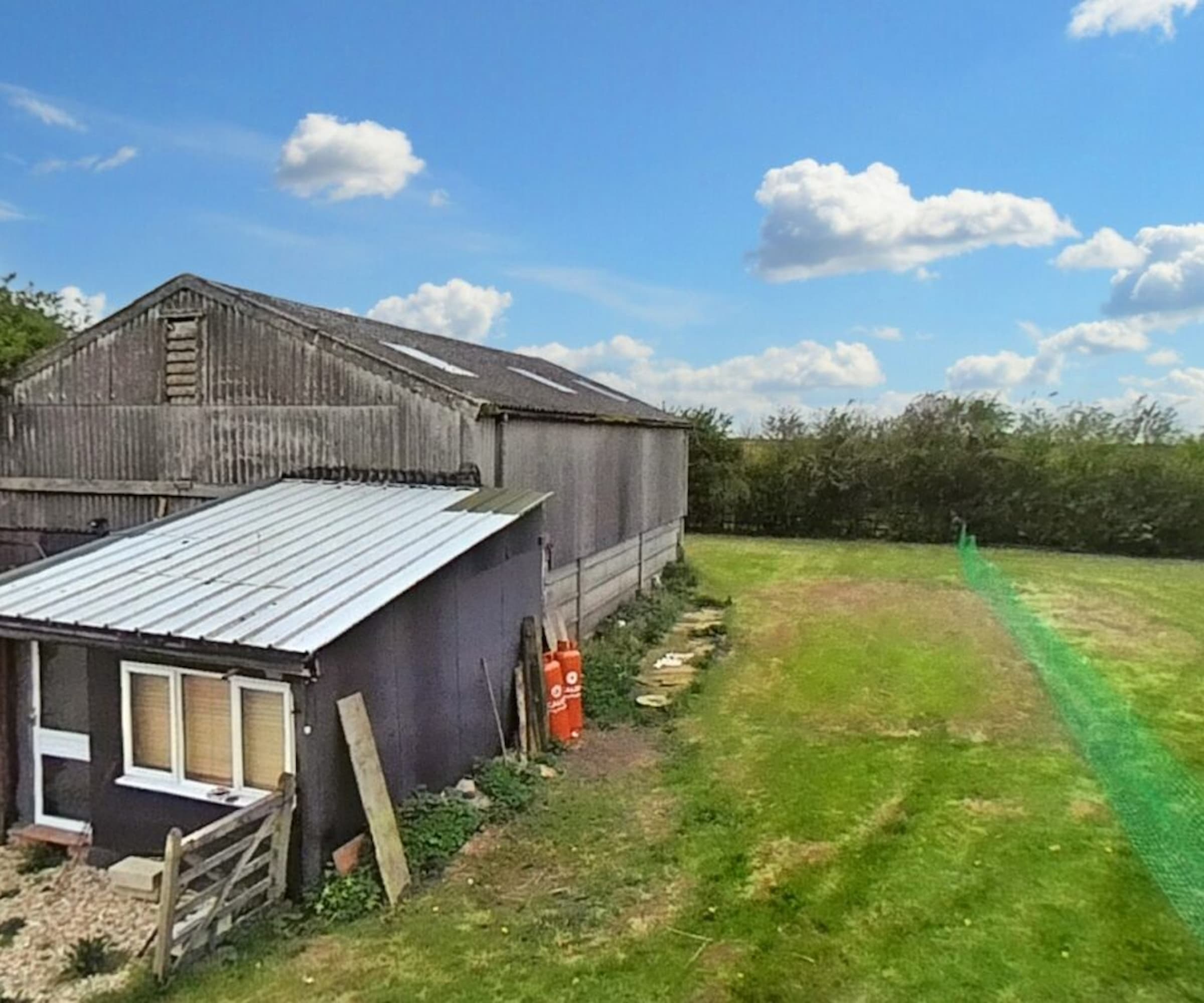Finding a plot to build on — 14 key steps to success
Keen to find land on which to build, but not sure where to start? Our experts have come together to share their 14 top tips for finding a plot to help kickstart your project

- 1. Register with local estate and land agents
- 2. Subscribe to land finding services such as Plotfinder
- 3. Check local authority planning lists
- 4. Check your council's local plan for future opportunities
- 5. Search using maps
- 6. Contact local architects and surveyors
- 7. Register on auction websites
- 8. Use local newspapers, advertising boards or forums
- 9. Keep your eyes peeled
- 10. Consider custom build schemes
- 11. Use professional land finders
- 12. Look at commercial sites for sale
- 13. Search your local council's brownfield register
- 14. Approach larger landowners
- Next steps
- Buying a plot vs buying an older property to demolish
- FAQs
Finding a plot to build on can sometimes feel like finding the proverbial needle in a haystack. Usually the vital first step for those looking to build their own home, it can be a daunting and frustrating process if you’ve never done it before.
As you can potentially be up against some stiff competition from other self builders, small builders and professional land finders, we spoke to Sophie O'Reilly, the manager of Plotfinder, a property whizz with over 25 years of experience in the industry, along with some of our Homebuilding & Renovating experts to help you identify the key steps to successfully finding a plot.
So, from those in the know, here are 14 ways to find and secure yourself a plot of land on which to build your dream home.
Where to start when finding a plot?
Although it may seem obvious, honing down your preferred location is the best starting point for finding a building plot, says Sophie O’Reilly, manager of Plotfinder.
“If you can identify a specific and practicable area to search thoroughly, you can concentrate your effort on finding a plot in an ideal location,” she explains. Start too wide and you may find yourself lacking the local knowledge to understand why a plot hasn’t sold, if there are any plans in place that could affect its future use and whether it’s being offered at a reasonable price.
When you are trying to find the perfect plot, it also often helps to think outside the box. Yes, many plots come packaged as a plot with planning permission, but often pieces of land are ripe for building a home on, but not advertised as such. There are often genius ways to build on city plots for example, so be sure not to have too narrow an imagination.
Understanding the many different types of self build plot which may be available to you is helpful, if you are willing to look that little bit harder. For example, there may be a small plot sitting behind some existing house, not visible from the street. And don’t overlook houses that are for sale that may not be what you are looking for, but could be demolished and replaced with the home of your dreams.

Sophie O'Reilly has dedicated over 25 years to the homebuilding industry. Manager of of Plotfinder for over 8 years, her passion is being able to create opportunities for self builders and renovators to find and create their dream home
Steps to finding a building plot
There are a number of different ways you can start generating information regarding available plots, say the experts. Some involve accessing publicly available information, others require you making contact with the right people and subscribing to services.
In general, the following are all available to you and are recommended by those who have experience in this field.
1. Register with local estate and land agents
“There’s no harm in registering with local estate agents as well as online sites such as Rightmove, says David Snell, one of the UK’s leading self-build and plotfinding experts, “but it shouldn’t be the only thing you do. In most areas there are only one or two land agents who are likely to deal with land – identify them and pester them to keep you informed.”
If you are going to sell your house and then rent while you search for a plot, try to chose one of those agents who do sell land. The aim is to try to get into that magic drawer in every agent’s office: the one with the list of ‘hot’ clients, who will get first crack at any good properties the agent is offered.
2. Subscribe to land finding services such as Plotfinder
A great place to start is Homebuilding & Renovating's own plotfinding website: Plotfinder, which is only £5 a month. This is a site specifically designed for our readers and anyone else looking to find their dream project. It has more than 10,000 UK-based plots up for sale for a range of budgets, from basic plots with no planning consent to renovation opportunities and land with all the planning permissions already in place. Not only that but you can sign up to the Plotfinder newsletter, which delivers a round-up of the best plots each week. In addition, you’ll get email alerts based on your criteria and free tickets to Homebuilding & Renovating events and shows worth up to £192.
Of course, if you find a good plot you’ll often need to move fast to beat the competition so it is worth being organised well in advance.
These can save you a lot of legwork, and offer a good range of sites in different areas. "They are a useful starting point, and at the very least will help you to identify those agents who are active in selling land in your target areas," says Mark Stevenson, self build expert. "They will also give you an idea of how much land is coming on to the market, and at what sort of price."

3. Check local authority planning lists
Another good way of finding out what’s going on in your local area and “identifying building plots before they come on to the market, is by scouring weekly lists of planning applications and decisions – usually published on local authority websites, says Sally Tagg, planning consultant and MD of Foxley Tagg Planning.
"If anyone wishes to get planning permission approval to build on a piece of land, they must submit an application, which then becomes a matter of public records," explains architect Julian Owen, self build expert and author of 'Self Build: How to design and build your own home'. "What this means is that you can walk into any planning department and ask to see the Planning Register, in which all the applications and decisions (where they have been reached) are recorded. Many councils now publish them on their websites."
"What you are looking for is recent applications, preferably outline (i.e. no detailed drawings), for single houses. If an approval has not come through, so much the better. A plot will not usually be advertised for sale until the planning approval has been granted, because this enhances the value, and, if someone spots it early enough, they can make an approach before many others are even aware that it is going to be for sale," says Julian.
"If you find a likely application, make a note of the applicant’s details and approach them directly; they are usually, though not always, the owners of the plot. If the application is for outline approval there is a good chance that they are planning to sell, because there is no point in getting a detailed set of plans drawn up which may be changed by a purchaser. But sometimes they may have obtained detailed approval, with a full design, probably because the planners have insisted on it."
"Either way, there is no reason why you should not make a polite approach, either by letter or telephone," he suggests.
Remember that even if your dream plot has planning permission for a house you would never consider building, it doesn't mean you can't build the one you want. When turning pieces of spare land into building plots, the developer will usually submit plans for the least controversial option in order to get the outline planning permission. These are often bungalows or small houses. The reality is that you may well be able to upgrade this planning approval to the kind of house you want.
4. Check your council's local plan for future opportunities
Local authority planning departments, in association with national government and county councils, prepare maps and plans of their area that identify which locations are suitable for new development, and the rules that will be used to govern infill plots. This information is published in the form of the Local Plan. It is a useful document, giving the background to planning policy, and can be browsed at the reception of the planning department.
At any given time, a revision of the Local Plan is usually in progress and, if it is going to replace the existing one fairly soon, it can give useful information on sites that may be released for development in the future.
5. Search using maps
“You can also use Google Maps to identify infill plots as gaps in the street scene that might have potential,” suggests Sally Tagg. Ordnance Survey maps can also be useful, adds Sophie O’Reilly.

6. Contact local architects and surveyors
Start speaking to local professionals early on is another tip from Sophie O’Reilly. “This might help to give you the heads up on sites that they are working on with plot development potential before they even go to market.”
7. Register on auction websites
Registering your interest in upcoming auctions won’t bind you to anything, but will ensure you have an opportunity to bid on plots or properties that could be knocked down leaving you with the perfect plot. “A large number of good opportunities go through auctions, either specialist auction houses or the auction arms of local estate agents,” says Jason Orme, managing director of Future PLC's homes' portfolio.
“They’re not always well advertised unless you register first, so establish the key agents in your area who sell through auctions and get on their list for catalogues. The majority of disposals from major companies, former national utilities and repossessed properties go through this route.”
8. Use local newspapers, advertising boards or forums
Although much information is available online, ‘land wanted’ adverts in local newspapers or land finding forums may open up opportunities for you.
Ensure that you get the local paper on the day it comes out – otherwise other, keener self builders may well have beaten you to the best opportunities.
And, while it might seem counter-intuitive in the highly competitive world of land buying, tell everyone that you’re looking for a building plot. There are lots of people with land they don’t want to build on, so if they know you’re looking they might signpost a hot lead.
Use the paper proactively – take out an advertisement for ‘Building Plot Wanted’ and play up your credentials as private individuals looking for a nice quiet place to live. People would often rather sell a plot to someone they can choose as a neighbour rather than a builder.
You can also consider posting ads in the village shop, on notice boards or on social media. Keep it simple, play up your credentials and never look like a developer as this will put people off. It’s a good idea to offer a small finder’s fee to encourage tip-offs for anything that might lead to a purchase.
9. Keep your eyes peeled
Looking into overgrown side gardens, disused garage blocks and other derelict properties is also another resource available to you. “If you drive around your favourite towns or villages, you’ll see plenty of different types of plot,” says David Snell.
“They’ll be old buildings that have fallen into disrepair or disuse. They’ll be large side gardens that in the street scene have become incongruous due to the fact that many of their neighbours have developed similar plots. They could also be large back gardens where a plot could be formed with its access either running through from the road at the front or, better still, from an existing side access which means building on a garden plot may be possible
"They could just be vacant parcels of land hidden away behind walls or hedges, adds David. "Plots are everywhere. Why are they still there? Because either those who own them don’t realise their potential, or they’ve decided they don’t want to cash in on that potential just yet.”
When looking around, make sure you assess what's already been built. Check for houses of a similar size and quality to the one you wish to build. The way that houses are valued means that it is less economic to develop a house that is massively disproportionate to those surrounding it. You can end up over-developing, that is spending far more money on a house than you could ever sell it for; or under-developing, that is building too small a house and failing to realise the full potential of the site.

10. Consider custom build schemes
In recent years custom build has emerged as a new industry that helps people to build individual homes. Custom build is very different to self build but the end product is the same: a home that you’ve had primary input into the design of.
Where custom build differs from self build is in its delivery. Self builders find their own land, choose and commission designers and builders, and in doing so take on quite a lot of development risk. With custom build, most of these things have been prearranged by a developer or an enabler.
Plots are serviced and have a guarantee of planning consent, and professionals are lined up waiting to work on your behalf. This all reduces the development risk for plot buyers, making custom build very attractive to anyone wanting to build their own home.
An ideal place to start when looking for a custom build plot is The Custom Build Homes' Plot Store. Here you’ll find custom build plots throughout the UK along with lots of support to help move your project forward.

11. Use professional land finders
If trudging the highways and byways isn’t your kind of thing, then employing a specialist land finder might be right up your street. A land finder is an individual or agent who has the skills to search for a plot on your behalf. Their services can be costly and are usually charged either as a percentage of the plot purchase price or as a monthly retainer.
Land finders usually work in the volume housebuilding industry and focus on land with multiple plots to maximise their earnings, but there are some who offer a more personal service focused on individual plots.
Be cautious when it comes to land finders. In theory they offer a great service but in practice finding a plot that suits your individual whims, design aspirations and budget is tough. Remember, there’s no guarantee of success when looking for a plot though, so avoid non-specific agreements, particularly those that require monthly fees paid monthly on direct debit.
If you do decide to employ a land finder then there are three key things that must be agreed from the outset:
- Terms of engagement – what the service will cost and what the terms of payment are
- Level of service – what you’re paying for. This might include land finding, land appraisal and managing the purchase
- What they should look for – a detailed scope of what you want to build, your budget, and the type of location you want

12. Look at commercial sites for sale
When we think of finding a building plot we immediately turn to using websites such as Plotfinder, Rightmove and Zoopla. While these are all great tools and cover most of the market, there are other websites that are less well known and may yield a plot with a little less competition.
A good example of this is the Government’s portal for asset disposal. A simple postcode search will identify properties the government is selling, some of which may be suitable for self building. There’s lots of assets that won’t be suitable, such as hospital buildings or large office buildings, but occasionally something appears that might be ideal – such as a disused ambulance station located in a residential area and between two housing developments, meaning consent to replace it with a self build home should be fairly straightforward.

13. Search your local council's brownfield register
In 2017, The Town and Country Planning (Brownfield Land Register) Regulations were introduced. These regulations require local authorities to prepare and maintain registers of brownfield sites that are suitable for residential development.
There are a few caveats for sites to be included on the register: they must be 0.25ha in size or support five dwellings or more; they must be suitable in planning terms for residential development and they must be available and achievable. The register is displayed in two parts:
- Part 1 is a comprehensive list of all brownfield sites
- Part 2 lists those brownfield sites that have been granted permission in principle
The register is a really useful tool for self builders, particularly those who are working as a group and considering larger sites with multiple plots. It offers an opportunity to identify likely sites before they’ve hit the market and it facilitates communication with local councils, who may be interested in helping people signed up to their Right to Build registers to find sites suitable for self-building.
Finding out what’s available in your area is as simple as putting ‘brownfield register’ plus the name of the relevant local authority into your search engine.
14. Approach larger landowners
Self building is now considered a mainstream form of house building, meaning that large landowners who may have traditionally sold land assets to volume housebuilders are increasingly considering self build as a route to sell building plots. From time to time, these landowners will want to sell disused and unwanted sites, many of which may be small and unsuitable for larger builders.
Self builders should look out for these opportunities and may even want to consider making direct enquiries for land that may look to have been forgotten –you never know, yesterday’s pumping station may be tomorrow’s self build plot.
Larger land owners include:
- Government (local and national)
- Canal and River Trust
- Network Rail
- Universities
- Statutory service providers
- Traditional landowner (e.g. Duchy of Cornwall)
What to do when you find a plot
Depending on how you find a plot will identify the next steps you need to take. “If you find a good opportunity that isn’t on the market for example, you must obtain the courage to knock on the owner’s door and ask if they’d like to sell,” recommends David Snell. “They may tell you that they’re fed up with being bombarded with requests to sell their land. But they may be willing to entertain your ideas. The thing to impress upon them is that you’re not a developer – you’re a self builder who wants to create their own home and anything you build will preserve the value and amenity of their home.”
Likewise, it’s important to not underestimate the importance of looking at the plot several times, says David.
“A first look will really concentrate on whether the plot is in the right location and price range. Only then can you begin to assess where the boundaries are and how wide and deep the plot is.
“It’s always a good idea to drive on past the plot and approach from a different direction to gain a different perspective. Always make a second visit before you take matters further; you’ll notice things you didn’t see before,” he advises.
“For example, if the plot is empty, you might notice a neighbour has encroached on the land and may be seeking to gain permanent possession of part of the plot. Look out for vegetation that might either impede the development or give an indication of conditions below ground. Back home you’ll be able to make some checks on property values and then you’ll be able to make a clearer assessment of value,” he adds before really looking into the intricate details of how to assess a plot.

Buying a plot vs buying an older property to demolish
“The easiest way to find a building plot is to buy a dilapidated house on a good site. This means, critically, that the principle of a house is already established, and you won’t be battling with planners for change of use. You could potentially live in the house for a couple of years while you are thinking about what to do,” says Piers Taylor, architect and founder of Invisible Studio Architects.
If an existing property is in a poor state of repair, is a small property on large land or is a bungalow, the sellers may also not realise the potential the land has as a building plot, so it may not be out of the question to demolish and replace on the land and grab yourself a bargain in the process.
However there are pros and cons to each option, says Sophie O’Reilly.
Buying land vs demolition – the pros
- Vacant land is generally lower maintenance than a property
- Flexibility
- You don't need to pay for a home inspection
- Opportunity to create a property that works for you
- Demolishing and rebuilding may not be as profitable as you hope due to unexpected costs
Buying land vs demolition – the cons
- Financing: It can be more difficult to secure financing for vacant land
- Research: You need to research the plot to ensure you can build what you want
- Planning permission: It can take years to get planning permission for a new build, or you may find it difficult to change the current permission
- Building costs: Building on vacant land can be expensive.

FAQs
How can I find someone to share a plot with?
If you can get in touch with like-minded self builders in your area and act together to raise funds, you could buy a plot that perhaps would be out of the reach of an individual self builder. There may also be custom build enablers and/or serviced plots available in your local area. Hundreds of plots are beginning to come to market through these routes, thanks to developers and local authorities releasing land for large-scale individual homebuilding.
What are the warning signs to suggest a plot is not feasible?
If a plot seems too good to be true, there’s a chance it is. You may have spotted an unusual opportunity but if any of the following apply, make sure to do your research even more thoroughly says Sophie O’Reilly.
Signs may include the fact it's not already been built on, there is water nearby, planning permission has been refused in the past and there are no other similar properties close by. Be sure to research your plot throughly.
That said, don’t always dismiss unusual sites, says Piers Taylor. “The most interesting sites for new builds are the funny leftover parcels of land that are typically overlooked but can be found in many places in our cities and towns,” he says. “These might be easements owned by statutory authorities and rail networks, or brownfield industrial sites or old garages – all with constraints that, for the resourceful, can be overcome.”
Can you buy a plot that's up for auction before it goes to auction?
“You can submit a pre-auction offer to the seller or auction house, this depends on the seller's willingness to accept offers beforehand, and you should always confirm if pre-auction offers are being considered before making one,” says Sophie O’Reily.
Refusing to compromise on a build plot can also be a major stumbling block in finding a plot, says Julian Owen. If you're not willing to accept anything but the 'dream', you're unlikely to find success in purchasing a plot, as these plots without fault just don't exist in many cases.
"If you have some very rigid requirements about where you want to live, the constraints imposed by the the available sites may dictate what type of house you will build," explains Julian. "On the other hand, if you have a firm idea of the character of the house you want to build, then you should be more flexible regarding the location. For example, if you want to live in a classic English village, the chances of getting planning approval for an innovative, modern design are, sadly, slim. If you can compromise and match your desired build style to your dream location, you improve your chances of achieving your main goal, by widening the choice of plots."
And finally, if you do find a plot that doesn’t have planning permission, but believe it’s the right one for you, “you will need to enter into a contract with the landowner,” says Sally Tag. “But, make sure this is conditional on achieving consent – never agree to an unconditional contract, which effectively means that you will buy the site regardless.”
For more plot finding advice, find out how to find a self build plot in a rural area.
Get the Homebuilding & Renovating Newsletter
Bring your dream home to life with expert advice, how to guides and design inspiration. Sign up for our newsletter and get two free tickets to a Homebuilding & Renovating Show near you.

The former Editor of Homebuilding & Renovating magazine, Jason is an experienced self builder and has recently finished renovating his 1960s home. Jason is now Managing Director of Future PLC's Homes' portfolio, which includes UK-leading titles such as Ideal Homes, Livingetc and Homes & Gardens. He is also the author of The Self Build Dream. You can catch Jason in the seminar theatres and Advice Centre at many of the Homebuilding & Renovating Shows across the UK.
